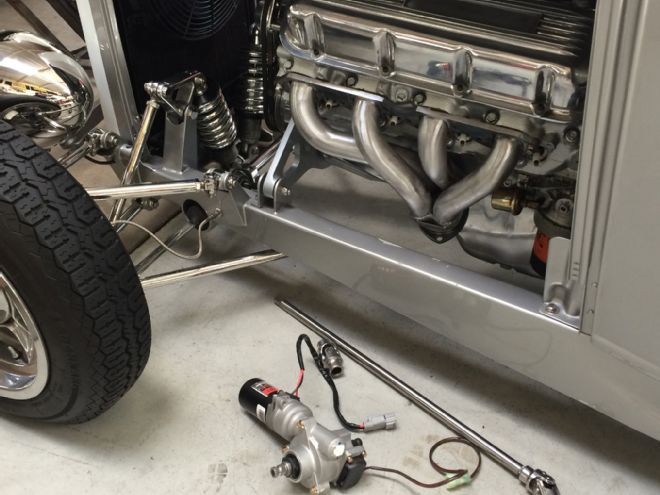
Steering "feel" is very much a personal preference, some preferring manual steering, some preferring superlight power steering, and others with a preference somewhere in between. Most roadsters really don't need power steering, but the owner of this Kugel Komponents IRS- and IFS-equipped and big-block–powered 1932 wanted it, without resorting to swapping to a power rack-and-pinion and the necessary pump and plumbing. In fact, a suitably narrow power rack-and-pinion isn't available for this IFS application.
He brought the roadster to Kugel Komponents—who in addition to their product line also build chassis and undertake jobs from what you see here to turnkey cars—who suggested adding Electra-Steer, an electric power steering system from Unisteer. While versions that fit inline in the steering column are available, it was simpler to install the universal kit. Unisteer offer two universal kits, one for vehicles up to 3,000 pounds and this one, for vehicles up to 4,500 pounds. The smaller version has input and output shafts with 9/16-30 splines, while this unit has 11/16-36 splines. The latter has more options when it comes to couplers and U-joints, incidentally.
You may wonder about the safety of electric steering. The Electra-Steer is designed to "shut down" if it becomes overheated, reverting to the vehicle's manual steering capabilities, and will automatically resume operation once it has cooled. For this reason it shouldn't be mounted very close to heat sources. The computer module is sealed inside a weather-resistant box, though in this case it was mounted under the dash. As the unit is mounted inline in the steering shaft, all the torque of the steering passes through the unit's mounting plate, so if you don't use the bracket supplied but make your own, ensure it is substantial. Also ensure you mount the unit the correct way around—the shaft on the mount side of the motor is the input, and is the steering wheel side.
The owner of our subject roadster also wanted to replace the headers for block huggers, which meant a straight steering shaft as was previously used wasn't going to work. Here's how the Kugel crew “got around” that issue, as well as how the Electra-Steer was mounted.
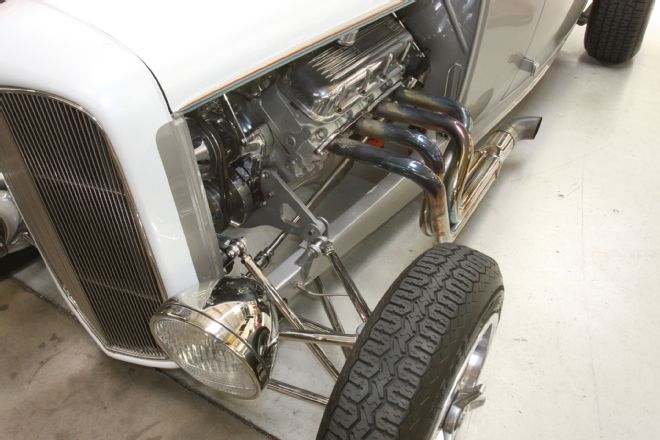
Not only did this 1932 roadster come to Kugel Komonents to have electric power steering added, but also to replace these headers, the owner wanting an exhaust system inside the bodywork.
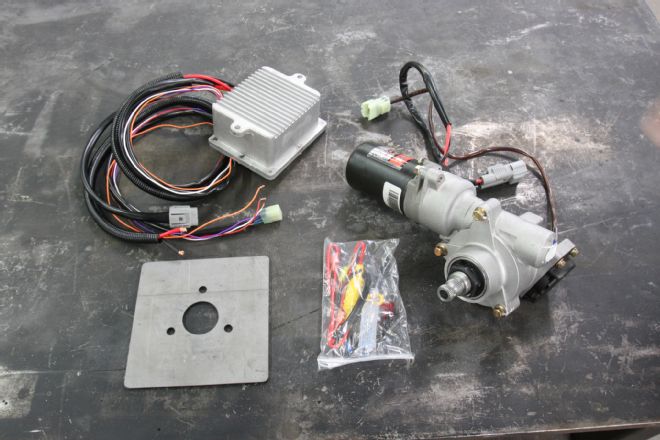
The electric power steering system, Electra-Steer, as supplied by Unisteer, complete with controller, power steering unit, oversize mounting bracket, and fused link.
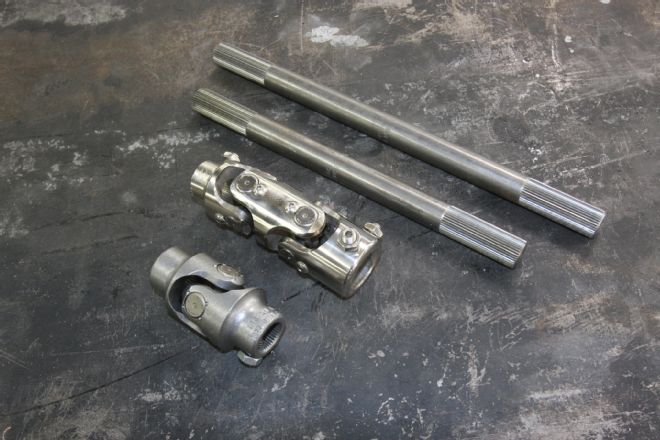
Borgeson supplied the 3/4-36 shafts, of which Kugel Komponents keeps various lengths in stock, as well as the universal joints. Various sizes were needed, as the column is a 1-inch DD, the rack-and-pinion an odd 9/16-17, and the intermediate U-joints on the shafts 3/4-36.
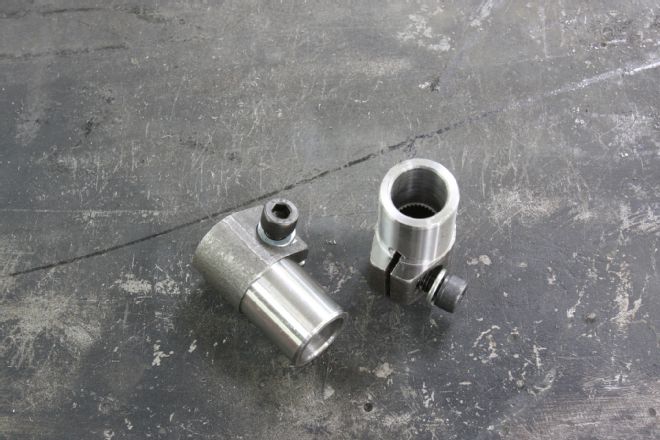
You'll probably need a pair of these couplers, not supplied with the kit, but available from Unisteer. The splines on the input and output of the pump are unique, 11/16-36, and Unisteer offer couplers and U-joints in this size.
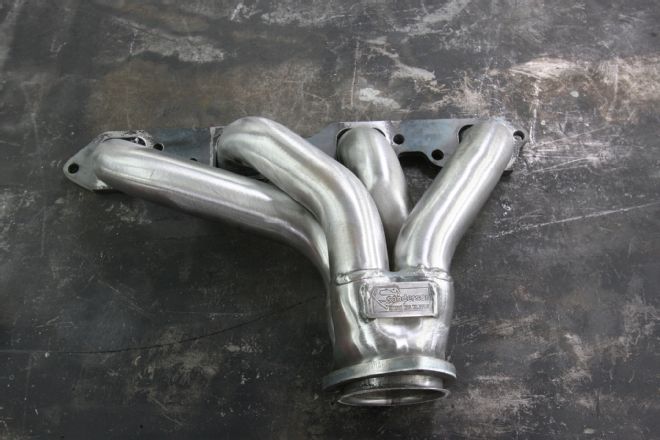
Sanderson Headers offer these block huggers for the big-block, ideal to keep the new exhaust system inside the hood sides.
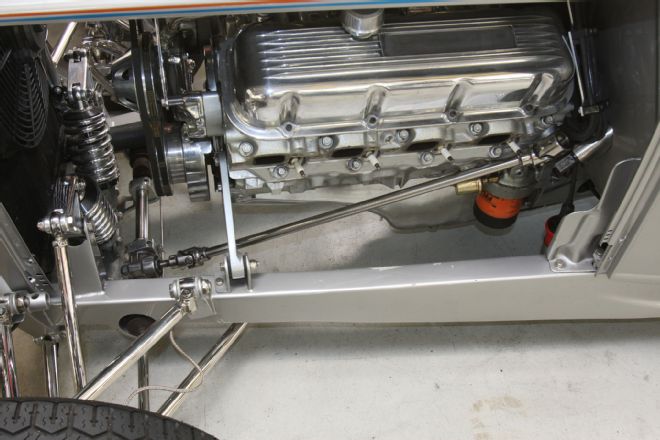
The original steering shaft was a single stainless steel shaft connecting the rack to the column. Clearly this would no longer work with the new headers and Electra-Steer.
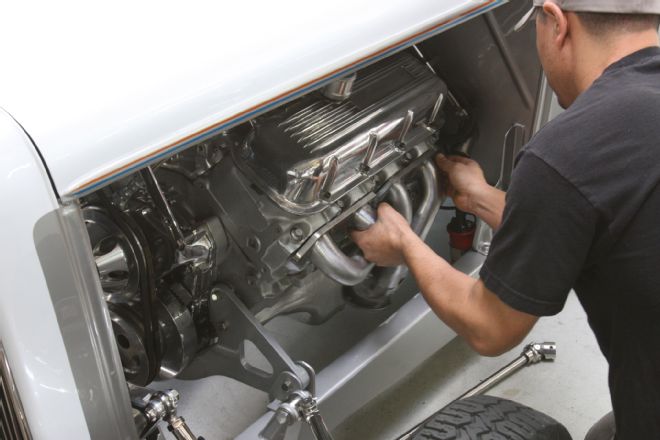
The new Sanderson block hugger headers were installed first.
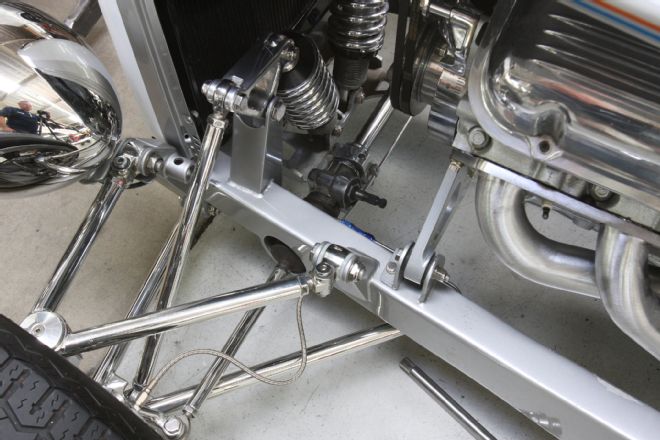
With the new headers installed, here's what the crew at Kugel Komponents were dealing with, routing the steering from the rack-and-pinion, past the motor mount, through the electric power steering unit, and around the headers.
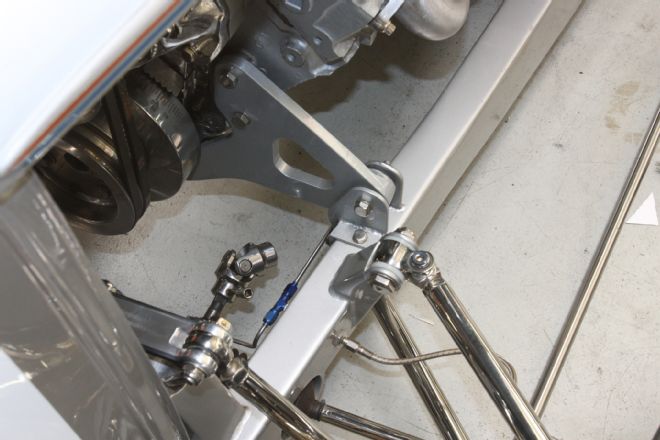
A 9/16-17 to 3/4-36 universal joint was installed on the rack-and-pinion.
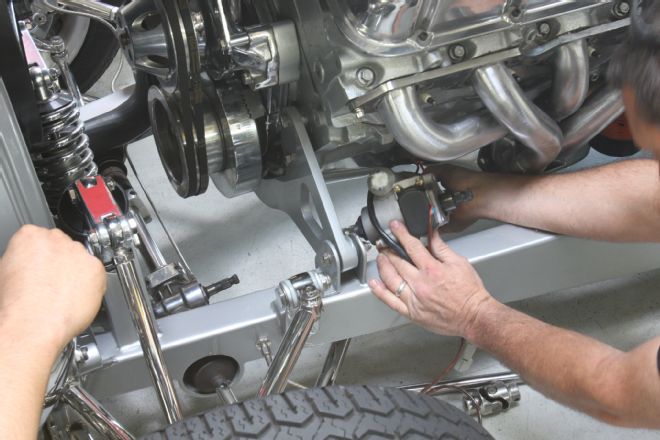
The Electra-Steer unit was next mocked in place to determine the ideal location.
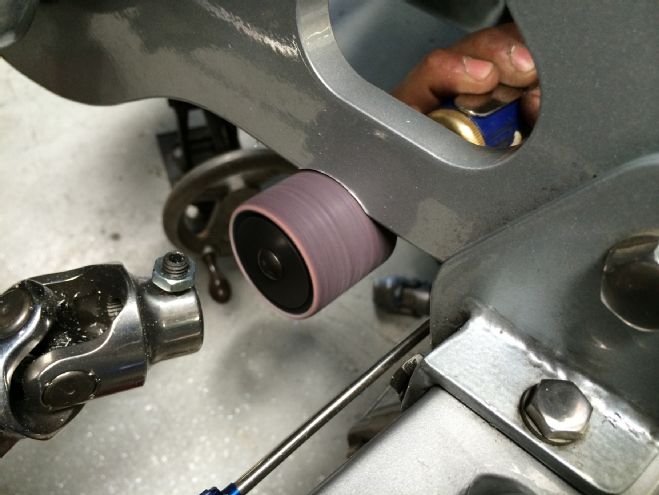
It was obvious that to mount the unit as high as possible for clearance purposes, the motor mount would have to be clearanced for the shaft. This was done with a drum sander.
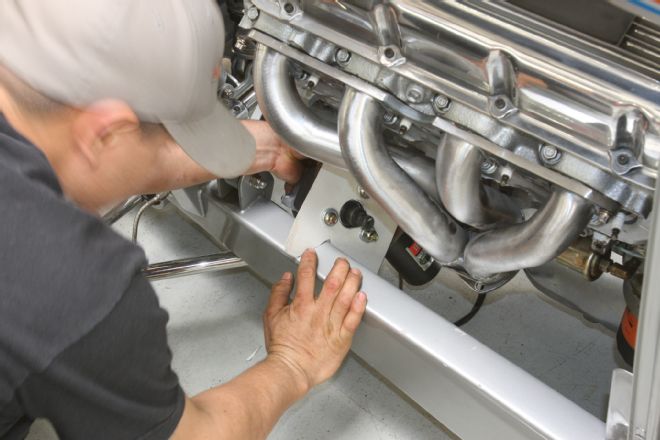
Though the Unisteer kit comes with a mounting plate, it was used merely as a template here, and a new mount fabricated once a pattern was made.
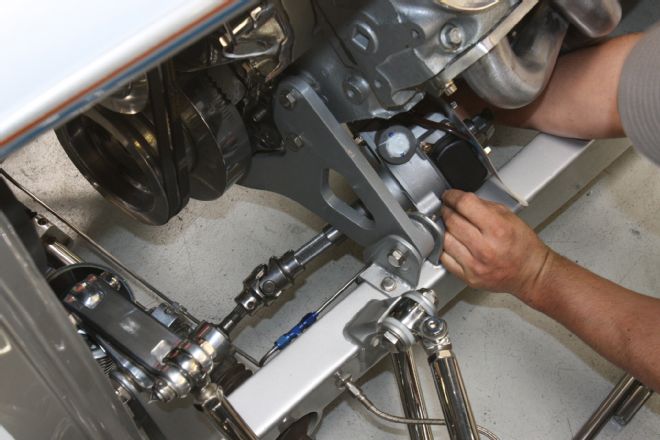
With the unit bolted to the pattern and held in place, a coupler and short shaft were installed to check clearance on the motor mount.
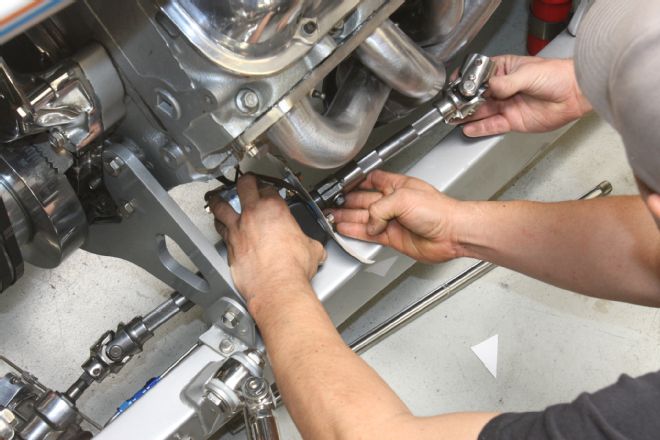
An extra pair of hands helps plan the next section of steering shaft. This setup was deemed to be too long and it was decided a shorter section of splined shaft would replace it.
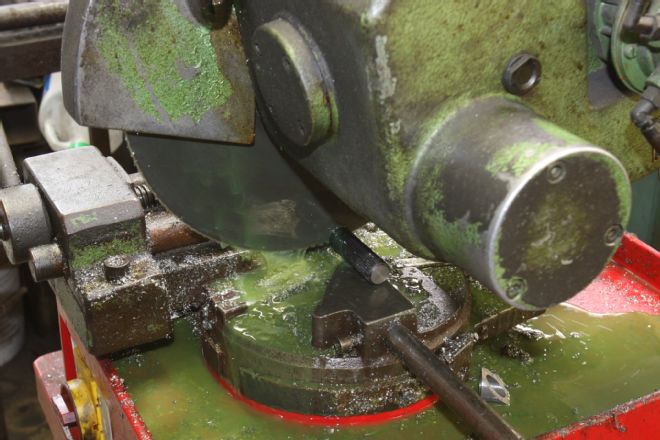
A section of splined shaft was taken from stock and cut to length.
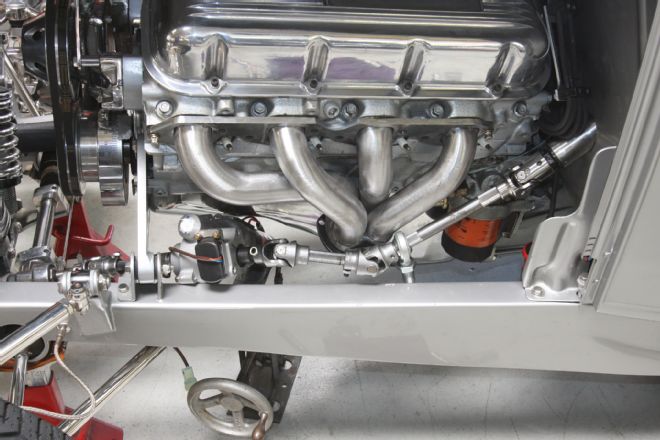
With the Electra-Steer unit on a jack, the entire system of shafts, couplers, and U-joints was mocked in position. Note the coupler has been replaced with a U-joint to help clear the header better. The mount for the heim joint could now be determined.
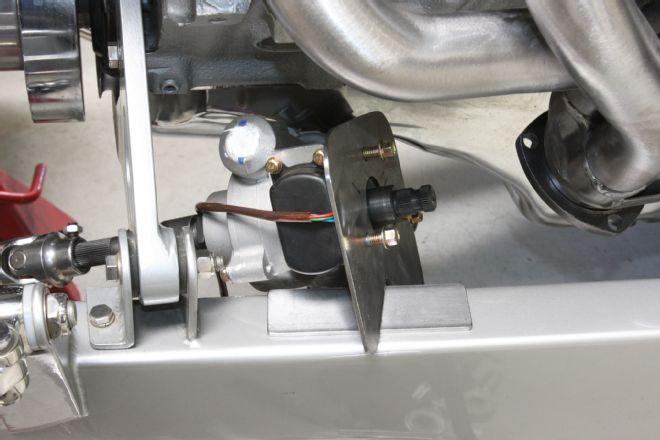
Using the supplied plate as a template, a custom mounting bracket was fabricated, starting with the main plate, then adding sections to bolt to the framerail.
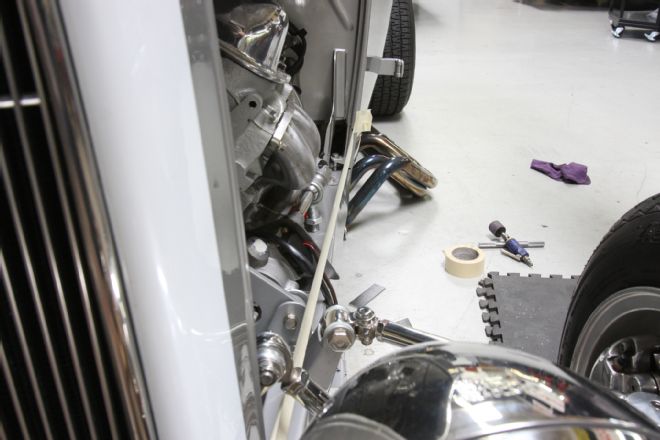
Using a length of tape from the cowl to the grille shell, one last check to ensure everything was inside the hood sides, and the mountings could be made permanent.
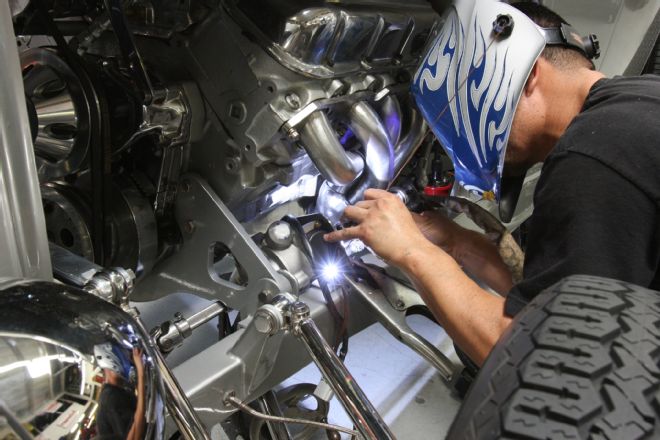
Jose tacked the pieces of the mounting bracket together …
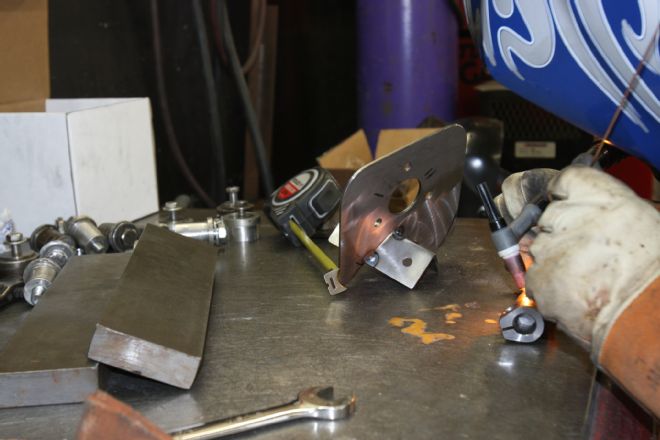
… then disassembled everything to finish weld it on the bench.
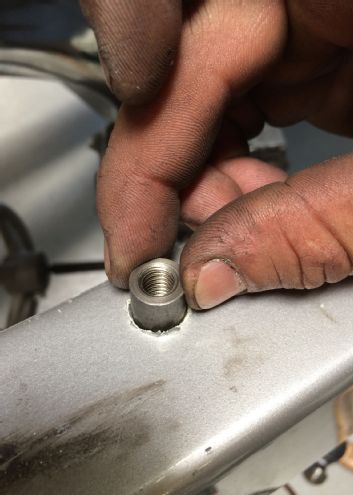
As the bracket has to handle plenty of torque, the thickness of the framerails was deemed too weak, so threaded bungs were welded into holes drilled in the rails.
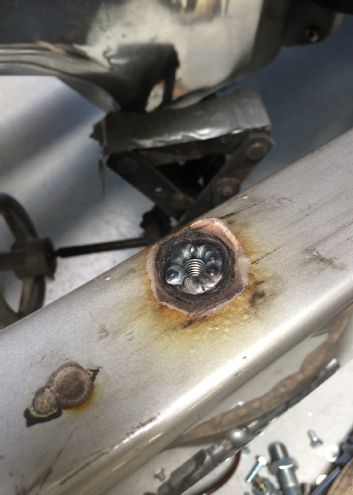
After welding and prior to grinding and cleaning the threads, here's the first bung in place.
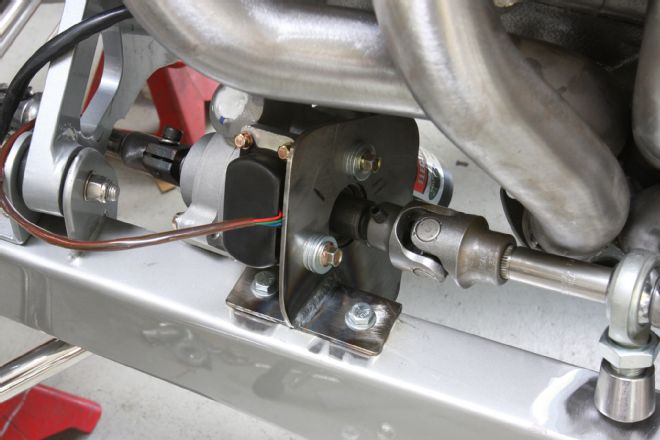
Another bung was welded in the top of the rail, and the unit bolted in place. The stacks of washers are temporary! Note also the design has reverted to a longer shaft exiting the unit, as it was decided to mount the heim joint on this section of shaft.
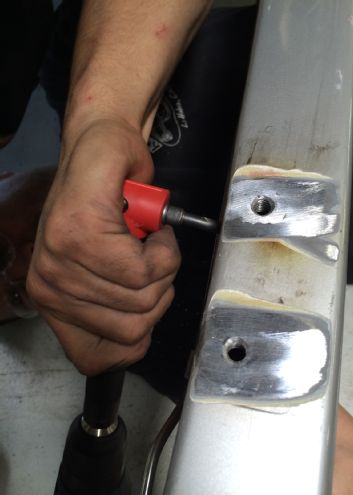
Apart again, two more mounting holes were drilled on the inside of the framerails, providing four anchor points.
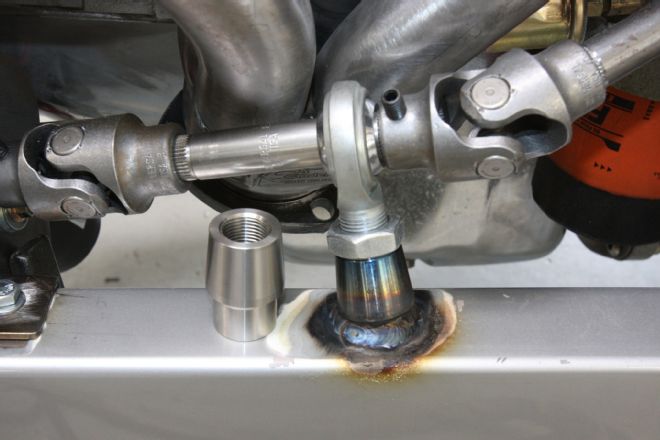
A larger threaded bung, of a design more commonly used in the ends of four bars or split wishbones, was welded to the framerail to mount the heim joint.
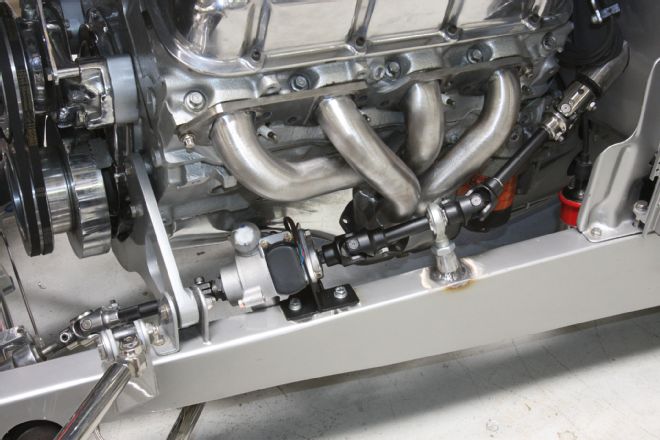
With the shafts, U-joints, and mounting bracket painted flat black, the system is complete, with the exception of wiring in the control module under the dash. The car's owner will repaint the framerail to match.